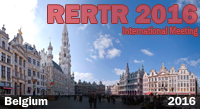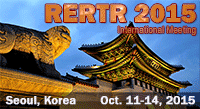IAEA/USA Interregional course on
Preparations to Ship Spent Nuclear Fuel (1997)
Australian Experience with
Shipment
of Research Reactor Spent Fuel
![]() PDF version available
PDF version available
DOWNLOAD full paper in PDF format.
Contact:
Mr. Allan Murray
Embassy of Australia
Washington, DC
Tel.: +1-202-797-3042
Fax: +1-202-438-5156
E-mail: [email protected]
IAEA/USA Interregional Training Course
Technical and Administrative Preparations Required for Shipment of Research Reactor Spent
Fuel to its Country of Origin
13-24 January 1997
Argonne, IL
Notes on
Australian Experience with Shipment
of Research Reactor Spent Fuel
Since 1958, the operation of the HIFAR research reactor has produced more than 1600 spent fuel elements. A shipment of 150 HIFAR spent fuel elements to Dounreay, Scotland, occurred in 1963. Following the October 1995 Australian Government decision to reduce the number of spent fuel elements stored at the Lucas Heights site, a further shipment of 114 elements took place in 1996. The following provides some information on the lessons learnt from the 1996 shipment.
Regulatory arrangements
In Australia, and commonly in other countries, there are 3 main types of regulatory approvals required.
- Environmental legislation required that the potential environmental impact of the shipment be specifically assessed and be adequately addressed in the transport arrangements. This required the preparation of a Public Environment Report (PER) identifying and quantifying potential impacts, and a process of public consultation on this PER. For this purpose ANSTO drew heavily on the modeling and results of the US DOE Environmental Impact Statement (EIS-0218F, February 1996), appropriately adapted to the specific shipment proposed. This proved to be a valuable and convincing assessment for meeting the requirements of the Australian environmental legislation.
- Export approval for nuclear material and the associated safeguards and physical protection arrangements were relatively straightforward, as the procedures are well established under Australia's Customs Regulations and the Australian Safeguards Act.
- Transport regulations for radioactive materials are based on the IAEA Regulations and provide a universal basis for regulating shipments of radioactive materials, having been applied successfully for over 30 years. They are incorporated into national regulations in most countries, including Australia. The Australian national Competent Authority designated for the sea shipment of radioactive materials is the Australian Maritime Safety Authority (AMSA). The principal regulatory responsibility for road and rail shipment of these materials within Australia is usually with the State governments. However, the Australian Radiation Laboratory (ARL) has been formally designated as the Competent Authority for road/rail transport in Australia under Commonwealth jurisdiction. An important lesson is to make sure in advance that the necessary regulatory responsibilities and authorities are clear and in place in advance of any shipment.
Transport Cask
The LHRL-120 cask was designed and manufactured in the U.S. in 1987-88 and is owned by ANSTO. It is constructed of an inner and outer stainless steel shell welded to a base plate and secured by a bolted lid with double O-ring seals. The annular space between the shells is filled with lead for radiation shielding purposes and additional lead shielding plates are attached to the base and lid. The cask is surrounded by an impact limiter which consists of a steel shell filled with dense polyurethane foam to provide energy absorption and thermal insulation. The cylindrical-shaped impact limiter is 3.4 metres long with a diameter of 2.3 metres. The impact limiter is supported on cradles attached to a skid; the skid is bolted to the base of a shipping container which also includes a weather proof cover. The shipping container and cask weigh 24 tonnes.
The LHRL-120 cask has a Competent Authority certification from the Australian Maritime Safety Authority (AMSA) and a U.S. Department of Transportation validation. However, two issues needed to be addressed; the cask certificate was not validated by the U.K. Competent Authority (needed before the cask could be used for transport within the U.K.) and the expiry date of the existing certificate was close to the date of shipment, necessitating that a case be made to AMSA for renewal of the certificate. For these purposes it was necessary to carry out a series of tests on the cask to be able to confirm the ongoing suitability for shipping spent fuel. It was also necessary to provide the U.K. authorities with sufficient information to permit them to independently review the safety case for the cask to permit their validation of the certificate and its renewal. The important lesson is to allow sufficient time for these processes. In general these problems will be handled by the specialised nuclear transport companies, not by the reactor operators, but the operators need to be aware of the nature of these issues.
Sea Transport Arrangements
In principle the IAEA Regulations and the International Maritime Organisation Dangerous Goods Code would permit a regularly scheduled cargo vessel to be used to transport spent fuel shipments. However, there are a number of factors that may mitigate against this, and did so in the case of the ANSTO shipment. These are:
- Regular cargo vessel routes usually take in a number of intermediate ports of call in several countries. The regulations for spent fuel transport would require that the cask certificate(s) be validated by every such transit country and this, as indicated before, is a cumbersome and time consuming process. In addition, it could be necessary for the origin country and the transit country to agree on specific physical protection arrangements to apply during the port call.
- Many shipping companies refuse to carry radioactive cargoes on the same vessel with other cargoes.
- INF Code - This Code is not mandatory but most jurisdictions require that shipments of spent fuel be undertaken consistent with the Code. The ANSTO shipment totaled only 1,500 TBq activity so was well within the INF-1 classification limit of 4,000 TBq. Most modern container vessels would satisfy the construction and equipment requirements for INF-1 classification under this Code. However, practically no such vessels actually carry certification to that effect and very few ship owners or shipping administrations have experience with applying the requirements of the INF Code. The result is that demonstrating practical compliance with the INF Code is a matter for case-by-case negotiation which further limits the vessels available and adds to the time required in arranging shipments.
Nuclear Liability Insurance
The nuclear liability insurance needs to be comprehensive and to indemnify all parties involved in the shipment from leaving the gates of the operator to arriving at the gates of the receiver. This proved to be a key public acceptance issue for the Australian shipment. It needs to be made clear to all concerned parties that they are covered against any potential nuclear damages and also indemnified against claims for nuclear damage such that, regardless of negligence etc, no nuclear liability can be channeled back to them. This includes the carriers, affected communities and public authorities (such as police involved in escort and public order arrangements). The standard arrangements in place for radioactive material shipments to the UK provided for exactly this type and extent of cover for the ANSTO shipment, as the UK is party to the Paris Convention and has domestic legislation to give effect to the relevant requirements of that Convention. It is understood that the US has similar domestic legislation that will ensure similar coverage is provided for the return shipments to the US. The important issue, however, is that the reactor operators originating such shipments need to be aware of the details of this nuclear liability coverage so as to satisfy the very real concerns that will arise from many quarters on this question.
Reference:
Public Environment Report, "Transport of HIFAR Spent Fuel from Lucas Heights Research Establishment to the United Kingdom Atomic Energy Authority Establishment, Dounreay Scotland, for Reprocessing", Australian Nuclear Science and Technology Organisation, 27 October 1995.




